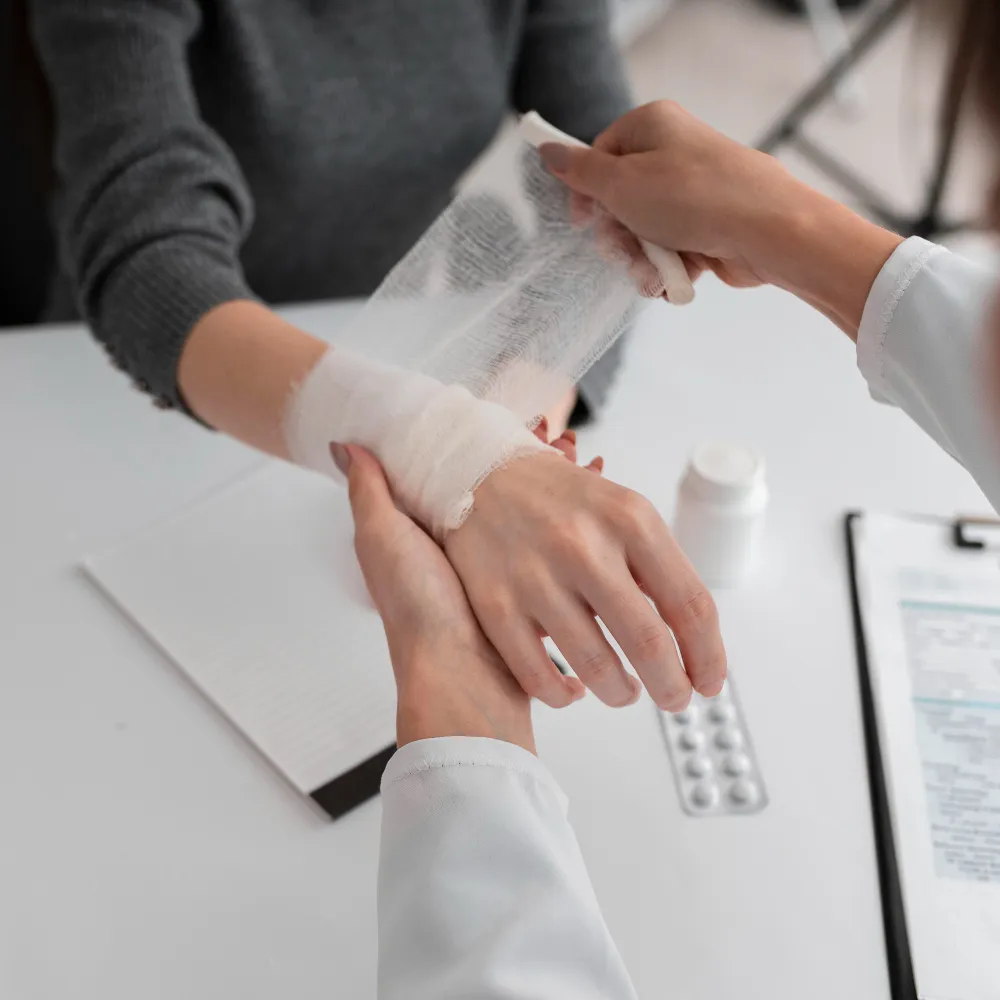Learn practical tips to help care for your wound between visits from our team, including cleaning techniques and how to monitor for signs of infection.
Caring for a non-healing wound at home can be challenging, but with proper care and attention, you can help manage the wound and support the healing process. Here are five essential tips for at-home wound care:
1. Keep the Wound Clean
- Why It Matters: Cleanliness is crucial in preventing infection, which is a common reason for delayed wound healing. Regular cleaning helps remove dirt, bacteria, and dead tissue.
- How to Do It: Gently cleanse the wound with saline solution or mild soap and water. Avoid using hydrogen peroxide or alcohol, as they can damage healthy tissue and delay healing. After cleaning, pat the area dry with a clean, soft towel.
2. Change Dressings Regularly
- Why It Matters: Keeping the wound properly dressed protects it from dirt, bacteria, and further injury while maintaining a moist healing environment, which is essential for faster recovery.
- How to Do It: Follow your healthcare provider’s instructions on how often to change dressings. In general, dressings should be changed daily or whenever they become wet or dirty. Use clean, sterile supplies and apply the appropriate dressing for your wound type (e.g., hydrocolloid, foam, or gauze dressings).
3. Monitor for Signs of Infection
- Why It Matters: Infections can slow healing and lead to complications. Detecting signs of infection early helps you seek medical attention before the condition worsens.
- How to Do It: Watch for symptoms like increased redness, swelling, warmth around the wound, pus or foul-smelling discharge, or increased pain. If you notice any of these signs, contact your healthcare provider immediately.
4. Maintain a Healthy Diet
- Why It Matters: Proper nutrition is vital for wound healing. A well-balanced diet supports the immune system, tissue repair, and overall healing.
- How to Do It: Ensure you’re consuming foods rich in vitamins (especially vitamins A and C), minerals (like zinc), and protein. These nutrients help promote cell regeneration and strengthen your body’s ability to heal. Stay hydrated and avoid excessive sugar, which can impair wound healing.
5. Offload Pressure
- Why It Matters: For wounds on weight-bearing areas like the feet or buttocks, constant pressure can impede healing and cause further damage.
- How to Do It: If you have a wound on your foot (such as a diabetic ulcer), use specialized footwear or cushions to reduce pressure. For pressure ulcers, use pressure-relieving cushions or mattresses to minimize the impact on the affected area. Change positions regularly to prevent pressure from building up on the wound site.
Bonus Tip: Stay in Regular Contact with Your Healthcare Provider
- Non-healing wounds require ongoing professional care and assessment. Regular check-ins with your doctor or wound care specialist ensure that your treatment plan is on track and that any complications are addressed early.
By following these tips, you can help manage your non-healing wound at home and support the healing process while reducing the risk of complications.


